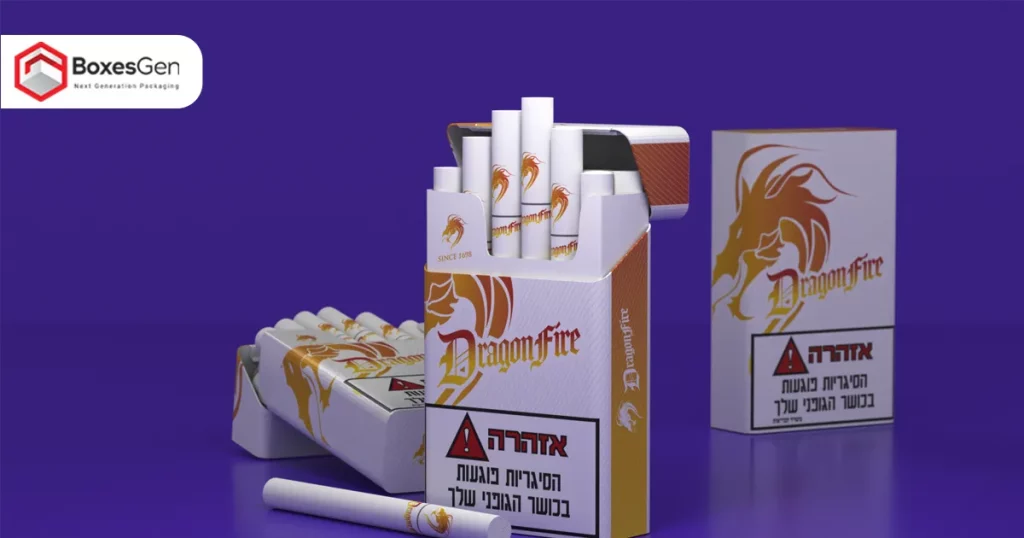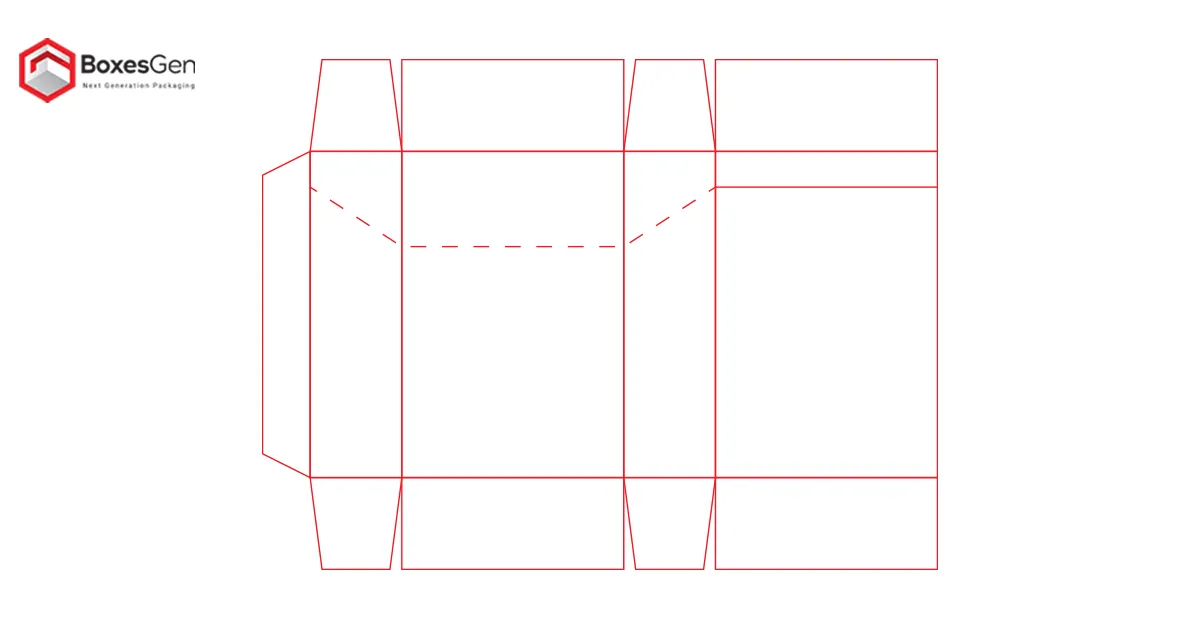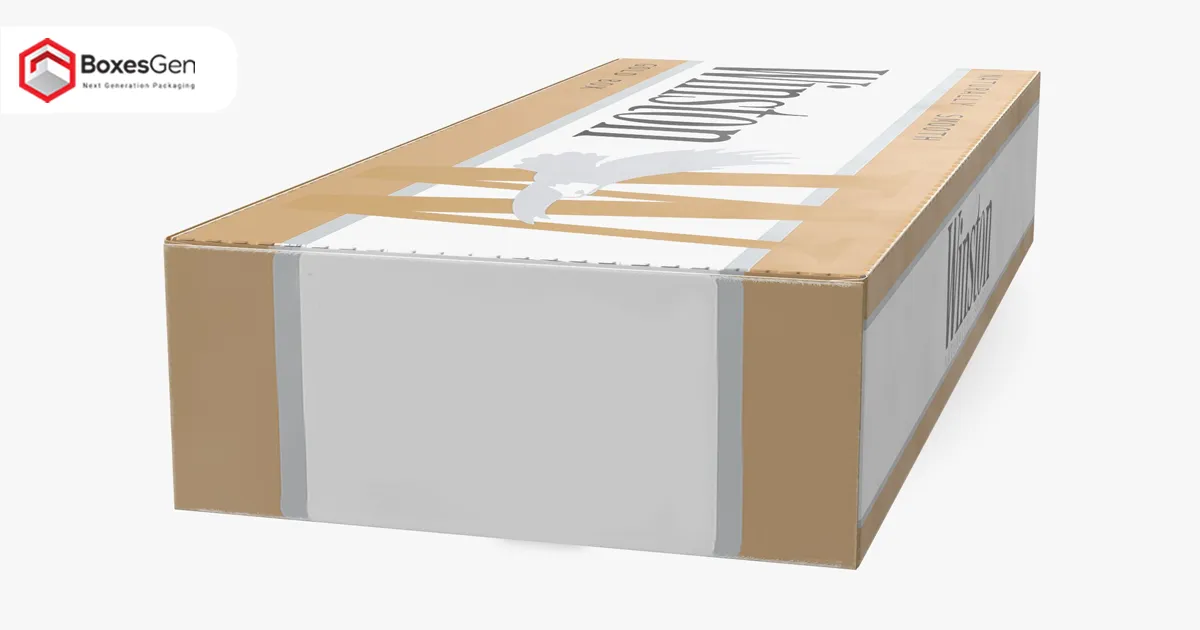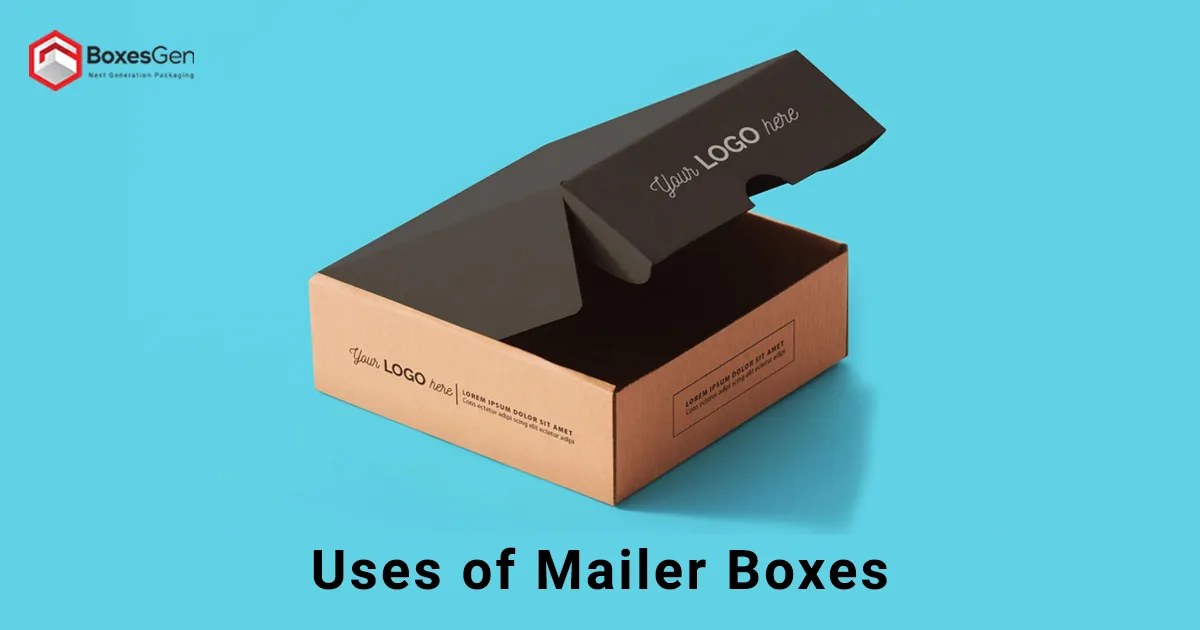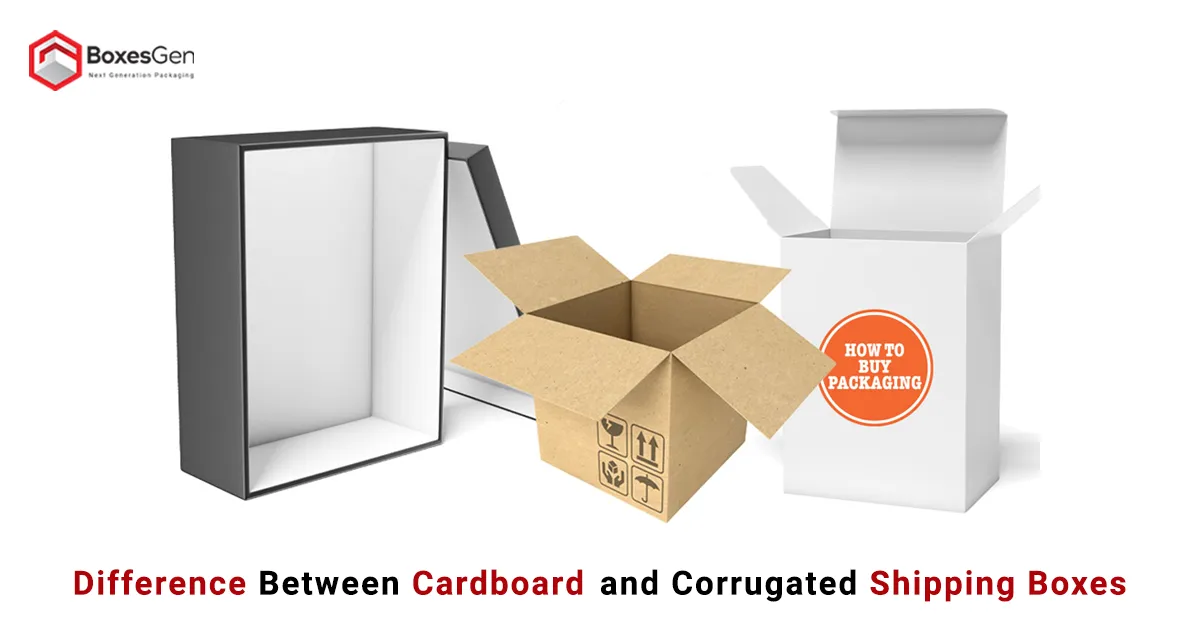How Many Cigarettes in A Pack?
The number of cigarettes in a pack is a fundamental aspect of the smoking experience, and it is a key element in the world of Cigarette Packaging. Typically, a standard pack of cigarettes contains 20 cigarettes. However, variations exist, with some packs holding 10 or even 25 cigarettes, depending on regional regulations and market preferences. The soft cigarette pack, commonly made of paper or cardboard, is the traditional choice, allowing for easy accessibility and portability. Packaging a cigarette, whether tapping the pack against the hand or flipping the lid open, is a familiar action for smokers, highlighting the tactile significance of the cigarette pack itself.
Additionally, these packs are often sold in cartons, which usually contain 10 packs, providing convenience for retailers and consumers. Understanding the nuances of cigarette packs, the Packaging, and the quantity they contain is integral to the smoking culture and industry.
The Role of Cigarette Boxes in the Tobacco Industry
Cigarette boxes play an important role in the tobacco industry, serving as the first line of communication between manufacturers and consumers. Beyond the simple contents of a cigarette pack, these boxes also provide a room to convey important information, health warnings, and branding. The design of cigarette packs profoundly impacts consumer perception, influencing their purchasing decisions and brand loyalty. From the moment a smoker looks at a pack of cigarettes, the packaging becomes a powerful marketing tool, with colors, images, and messages strategically used to create a lasting impression.
Cigarette Packaging & Smoking Culture
Cigarette packaging is a ritual with deep roots in smoking culture, and the design of the cigarette case plays an important role in this experience. Whether it is the tactile feel of a soft cigarette pack (Paper Cigarette Boxes) or the pleasant opening mechanism of a hard cigarette pack(Sleeve Cigarette Boxes), packaging contributes to the overall sensory experience of smoking. Manufacturers invest significant resources into making cigarette boxes that are aesthetically pleasing and user-friendly, knowing that pulling a cigarette from a well-designed box will add to the overall enjoyment for the consumers.
Cigarette packaging goes beyond aesthetics; it serves as a crucial platform for conveying health-related information and warnings. The strategic placement of graphic images and prominent text alerts consumers to the risks associated with smoking, fostering awareness about the harmful effects of tobacco. Consequently, cigarette boxes are vessels for holding cigarettes and critical instruments for public health messaging.
Pack of Cigarettes in Retail Landscape
In the retail landscape, the carton of cigarettes serves as a unit of sale, allowing vendors to efficiently manage inventory and offer consumers a convenient way to purchase multiple packs at once. The design of the outer carton is often an extension of the individual cigarette packs, reinforcing brand identity and facilitating easy identification on store shelves. Wholesale Cigarette Boxes, both at the individual and carton level, are integral to the tobacco industry’s marketing strategy, influencing consumer behavior and serving as a medium for regulatory information dissemination.
Vaping Vs. Cigarette Smoking
In recent years, the landscape of smoking has expanded to include vaping, introducing a new dimension to the traditional cigarette experience. Vaping, often touted as a potentially less harmful alternative, comes with its own set of controversies and health concerns. The contrast between the sleek, tech-savvy devices of vaping and the enduring familiarity of cigarette boxes reflects the evolving preferences and choices of consumers in the ever-changing tobacco market. As health discussions around smoking intensify, the dynamic between vaping and cigarette smoking continues to shape the industry’s future.
What Is in A Vape?
The composition of vape liquid, called e-juice or vape juice, varies but typically comprises a combination of propylene glycol (PG) and vegetable glycerin (VG). These two base liquids form the solution’s foundation, providing the vapor and throat hit. Flavorings, ranging from traditional tobacco to a myriad of fruit, dessert, and beverage options, are added to augment the vaping experience. Nicotine, although not always present, is an optional component for those seeking a nicotine fix. The exact ingredients and ratios can differ between brands and products, contributing to the diversity in vaping preferences. It is crucial for users to be aware of the ingredients in their chosen e-liquids and to consider potential health implications.
- Propylene glycol (PG) and vegetable glycerin (VG): Base liquids for vapor production.
- Flavorings: Add a wide range of tastes to the vape experience.
- Nicotine: Optional, providing a nicotine fix for users.
- Varying Ratios: Different brands and products may have distinct ingredient compositions.
How Many Cigarettes Are in A Vape?
Vaping differs significantly from traditional cigarettes in terms of composition and consumption. Unlike traditional cigarettes that come in packs with a predetermined number of cigarettes, vapes typically don’t have a fixed quantity of “cigarettes” per se. Instead, vapes consist of a refillable or replaceable liquid, often called e-juice or vape juice, housed in a cartridge or tank. The amount of e-juice in a vape device varies; users can refill or replace it as needed. It is crucial to note that the liquid is not equivalent to a specific number of cigarettes but is measured in milliliters. The diversity in e-juice bottle sizes, ranging from 10 ml to 120 ml, allows vapers to customize their experience based on personal preferences.
- Vapes do not have a fixed number of cigarettes; they use e-juice.
- E-juice quantity is measured in milliliters, not cigarettes.
- Users can choose from various e-juice bottle sizes (e.g., 10ml to 120ml).
- Vapers can refill or replace the e-juice based on their preferences and usage.
How to Pack Cigarettes
Packing cigarettes refers to the action of compressing the tobacco within a cigarette pack to ensure a tighter and more secure fit. It is a ritual ingrained in smoking culture and can be both practical and symbolic for smokers. To pack cigarettes effectively, follow these steps:
Hold the Pack Properly
Grasp the pack of cigarettes with one hand, ensuring a firm grip without crushing the cigarettes.
Invert the Pack
Turn the pack upside down to position the cigarette’s tobacco ends at the top.
Tap the Pack
Lightly tap the inverted pack against your hand or a solid surface. This action helps settle the tobacco, making the cigarettes more tightly packed.
Flip and Repeat
Turn the pack right-side up and tap it again against the bottom. This additional tap further compacts the tobacco.
Check Tightly Packed Ends
Ensure the tobacco ends of the cigarettes are evenly and tightly packed to promote a more consistent burn.
Cigarette Length & Size
Cigarette length and size vary across brands and styles, contributing to the diverse smoking experience. Standard cigarettes typically measure about 70-85 millimeters in length, with a diameter ranging from 8 to 9 millimeters. However, variations exist, including longer or slimmer options. The size influences factors such as burn time, flavor intensity, and nicotine delivery. Additionally, cigarette sizes cater to different preferences and cultural norms, shaping the tactile and sensory aspects of smoking.
Cigarette Pack Sizes
Cigarette pack sizes vary, accommodating diverse preferences and regulations. Common types include:
- King Size: 3.34 inches (8.46 cm and (84.6 mm)
- 100s: 3.94 inches (10 cm) and (100 mm)
- Shorts or Regular: 3.07 inches (7.8 cm) and (78 mm)
Cigarette Nicotine Content
Cigarette nicotine content is a crucial factor influencing smoking experiences and addiction potential. It varies among brands and styles. Understanding nicotine levels is essential for smokers aiming to manage their intake or transition to reduced-nicotine alternatives. Typically, the nicotine content ranges from;
- Nicotine Content Varies: Typically ranges from 8 to 20 milligrams per cigarette.
- Crucial for Managing Intake: Understanding nicotine levels helps smokers make informed choices.
What Are the Types of Cigarette Packs?
Cigarette packs come in various types, each designed to cater to different preferences and lifestyles. Common types include soft packs, which are flexible and convenient, and hard packs, known for their durability and protection of cigarettes.
- Soft Packs: Flexible and convenient for easy storage.
- Hard Packs: Durable and provide greater protection for cigarettes.
Standard Cigarette Pack Dimensions
Standard cigarette pack dimensions are designed for practicality and portability. Typically, these packs measure around;
- Length: Approximately 3.4 inches (8.6 cm) and (86 mm)
- Diameter: Around 0.9 inches (2.2 cm) and 22 mm)
Standard Cigarette Carton Dimensions
Standard Cigarette Carton Dimensions are designed for efficient packaging and storage, accommodating multiple packs. A typical cigarette carton size is;
- Length: Approximately 6.5 inches (16.5 cm) and (165 mm)
- Width: Around 5.5 inches (14 cm) and (140 mm)
- Height: Approximately 2.5 inches (6.4 cm) and (64 mm)
How Many Puffs Are in A Cigarette?
The number of puffs in a cigarette can vary based on factors such as the size of the cigarette, the smoker’s puffing style, and the presence of filters. The number of puffs in a cigarette can be higher or lower depending on individual smoking habits. The act of smoking involves drawing in and exhaling smoke, and the number of puffs is subjective:
- Average Puffs: Typically, 8 to 12 puffs per regular-sized cigarette.
- Individual Variability: The number of puffs varies based on personal smoking habits.
- Puffing Style: Intensity and frequency of inhalation influence the count.
- Filter Impact: The presence of filters affects the amount of smoke produced.
Conclusion
The question of how many cigarettes are in a pack reveals the intricate details embedded in the smoking culture. From the traditional 20-cigarette packs to variations in sizes and styles, the packaging of cigarettes plays a significant role in shaping the smoking experience. The tactile feel of the pack, the ritual of packing a cigarette, and the practicality of cartons all contribute to the overall attraction of this commonplace yet complex item. As health discussions around smoking persist and new alternatives emerge, the humble cigarette pack continues to be a symbol of habit, culture, and individual choice, encapsulating the multifaceted nature of this age-old practice.
FAQs of Cigarettes in A Pack
How Many Cigarettes in A Standard Pack?
A standard pack typically holds 20 cigarettes, providing a common and convenient quantity for smokers. Each pack offers a regulated amount of tobacco for consumption, ensuring a standardized smoking experience.
What’s The Average Number of Puffs Per Cigarette?
On average, a cigarette yields around 8 to 12 puffs. The number of puffs can vary based on individual smoking habits, including factors like inhalation intensity and frequency.
Any Variations in Cigarette Pack Dimensions Globally?
Yes, dimensions can vary globally. While standard dimensions are approximately 3.4 inches in length and 0.9 inches in diameter, different regions may have slight variations to cater to diverse preferences and regulations.
Differences Between Soft and Hard Cigarette Packs?
Soft packs are flexible and convenient, allowing for easy storage and portability. In contrast, hard packs offer durability and enhance cigarette protection.
What is the Symbolic Significance of Cigarette Pack?
The cigarette pack symbolizes habit, tradition, and personal choice. It encapsulates the ritualistic aspect of smoking, embodying both the familiarity and complexity of this prevalent social practice.
How Many Cigarettes Are in A Carton?
A carton typically holds 10 packs, totaling 200 cigarettes. This bulk packaging option is designed to offer convenience for retailers and consumers, allowing for a more substantial purchase.
What’s The Tactile Significance of Cigarette Packs?
The tactile significance of cigarette packs is paramount in the smoking experience. The feel of the pack in hand, the ceremonial act of packing a cigarette, and the overall sensory experience contribute to the satisfaction and enjoyment of smokers.
How Do Governments Regulate Cigarette Packaging?
Governments regulate cigarette packaging by mandating specific health warnings. These warnings, often graphic images and prominent text, serve as a means to educate and discourage smoking, utilizing the packaging as a tool for public health messaging.
Industry Trends in Reducing Cigarette Pack Sizes?
While not widespread, discussions and innovations around reducing cigarette pack sizes are emerging. This reflects shifting consumer preferences and heightened health considerations, prompting the industry to explore options that align with changing dynamics in the smoking culture.
What is The Impact of Cigarette Packaging On Perceived Strength?
Packaging plays a role in shaping the perceived strength of cigarettes. Colors, imagery, and design elements on the pack influence consumer perceptions. For instance, darker and bolder packaging may convey a sense of strength, impacting the expectations and experiences of smokers.
How Regulations On Cigarette Packaging Have Evolved?
Regulations on cigarette packaging have evolved significantly. Governments worldwide have tightened restrictions to include prominent health warnings, limited branding space, and, in some cases, standardized packaging. These changes aim to mitigate the appeal of smoking and enhance public awareness of associated health risks.
What is the Purpose of Filters in Cigarettes and Puff Impact?
Filters in cigarettes serve multiple purposes, including reducing tar and nicotine intake and providing a smoother smoking experience. While filters don’t necessarily impact the number of puffs directly, they influence the overall smoking sensation, altering the smoke’s composition and texture.
How Does the Packaging of Cigarettes Contribute to Marketing?
Cigarette packaging plays a crucial role in marketing by serving as a visual representation of the brand. Colors, imagery, and design elements create brand identity and influence consumer perceptions, making packaging a powerful tool for conveying brand messaging and capturing the attention of potential smokers.
How Do Different Sizes of Cigarette Packs Cater to Diverse Preferences?
Different sizes of cigarette packs cater to diverse preferences by offering options based on the quantity of cigarettes a smoker desires. Whether choosing a standard pack with 20 cigarettes or a smaller pack for a more limited consumption, the variety accommodates individual smoking habits and preferences.
How Do Cigarette Pack Dimensions Influence Burn Time?
Cigarette pack dimensions play a role in influencing burn time. The length and diameter of a cigarette affect the rate at which it burns. Smaller, thinner cigarettes may have a shorter burn time, while larger ones may burn more slowly. These factors contribute to the overall smoking experience for consumers.
What Is the Cultural Significance of Cigarette Cartons?
The cigarette carton holds cultural significance as a unit of sale in the retail landscape. Its practicality and ability to hold multiple packs make it a symbol of convenience and bulk purchase. The carton’s role extends beyond individual consumption, reflecting societal attitudes toward smoking and purchasing habits.

